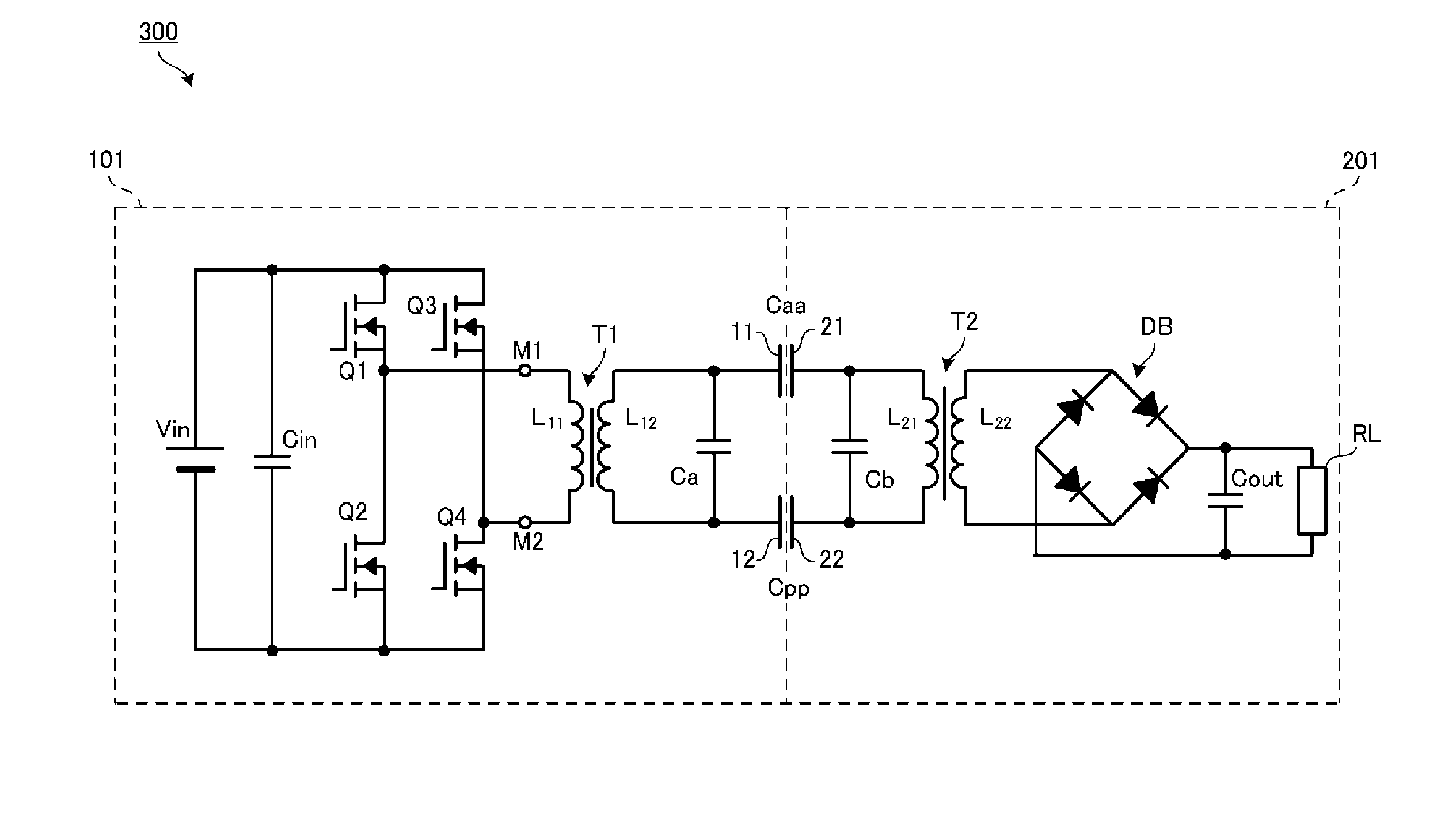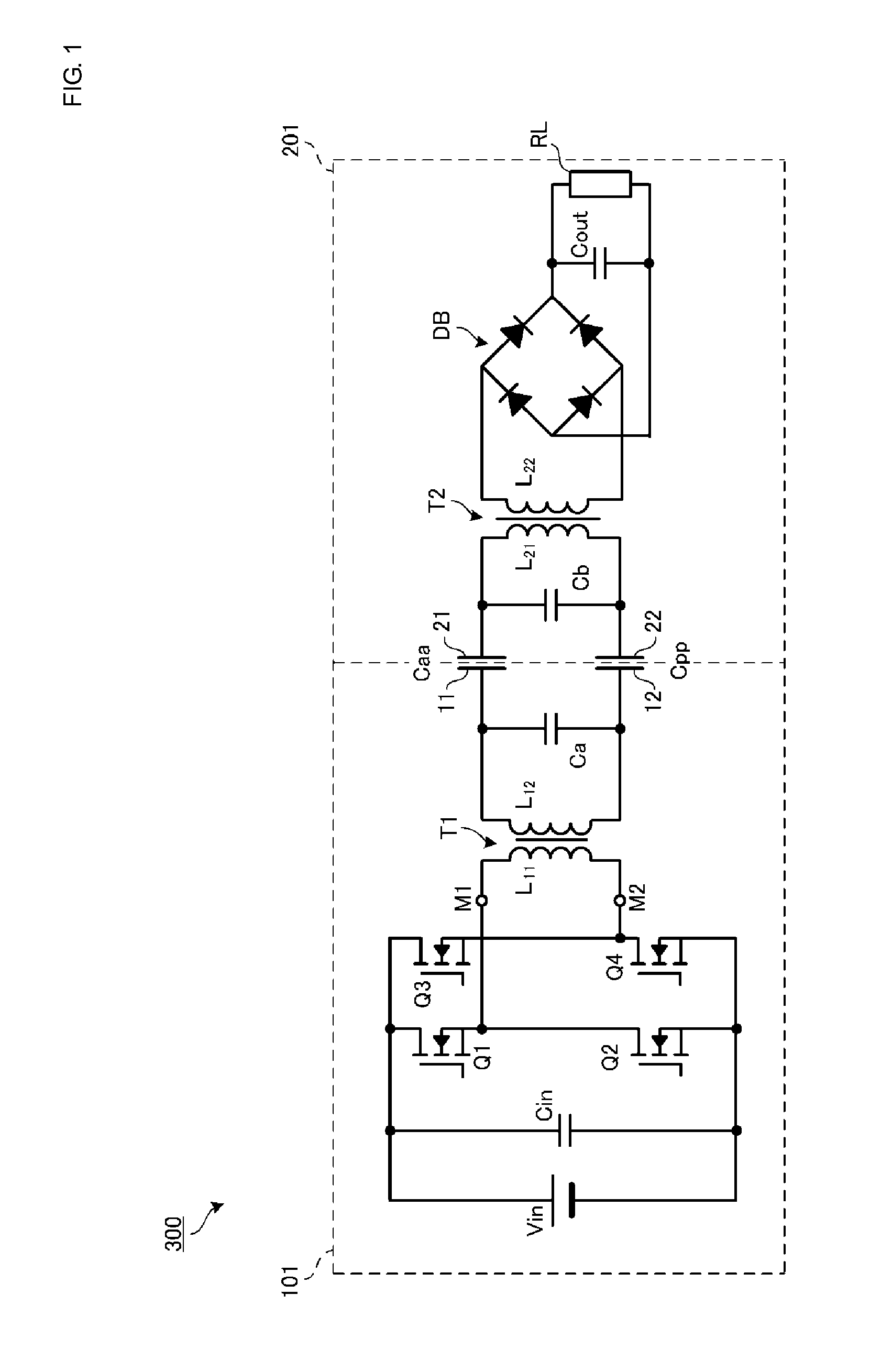Parameter derivation method
a parameter and derivation method technology, applied in the direction of impedence measurement, resistance/reactance/impedence, instruments, etc., can solve the problems of labor and time, inability to know the coupling capacitance and coupling coefficient, and sometimes large measurement errors, so as to facilitate the design of the shape and size of the electrode and achieve the effect of small measurement errors and easy derivation
- Summary
- Abstract
- Description
- Claims
- Application Information
AI Technical Summary
Benefits of technology
Problems solved by technology
Method used
Image
Examples
Embodiment Construction
[0023]FIG. 1 is a circuit diagram of a wireless power transmission system 300 according to an embodiment. The wireless power transmission system 300 includes a power transmission device 101 and a power reception device 201. The power reception device 201 includes a load RL. The load RL is a battery module that includes a rechargeable battery and a charging circuit. The power reception device 201 is for example a mobile electronic appliance equipped with a rechargeable battery. Examples of such a mobile electronic appliance include cellular phones, PDAs, portable music players, laptop PCs, digital cameras and so forth. The power reception device 201 is mounted on the power transmission device 101 and the power transmission device 101 charges the rechargeable battery of the power reception device 201.
[0024]The power transmission device 101 includes a direct current power supply Vin that outputs DC 5V or 12V. An input capacitor Cin is connected to the direct current power supply Vin. I...
PUM
 Login to View More
Login to View More Abstract
Description
Claims
Application Information
 Login to View More
Login to View More - R&D
- Intellectual Property
- Life Sciences
- Materials
- Tech Scout
- Unparalleled Data Quality
- Higher Quality Content
- 60% Fewer Hallucinations
Browse by: Latest US Patents, China's latest patents, Technical Efficacy Thesaurus, Application Domain, Technology Topic, Popular Technical Reports.
© 2025 PatSnap. All rights reserved.Legal|Privacy policy|Modern Slavery Act Transparency Statement|Sitemap|About US| Contact US: help@patsnap.com



